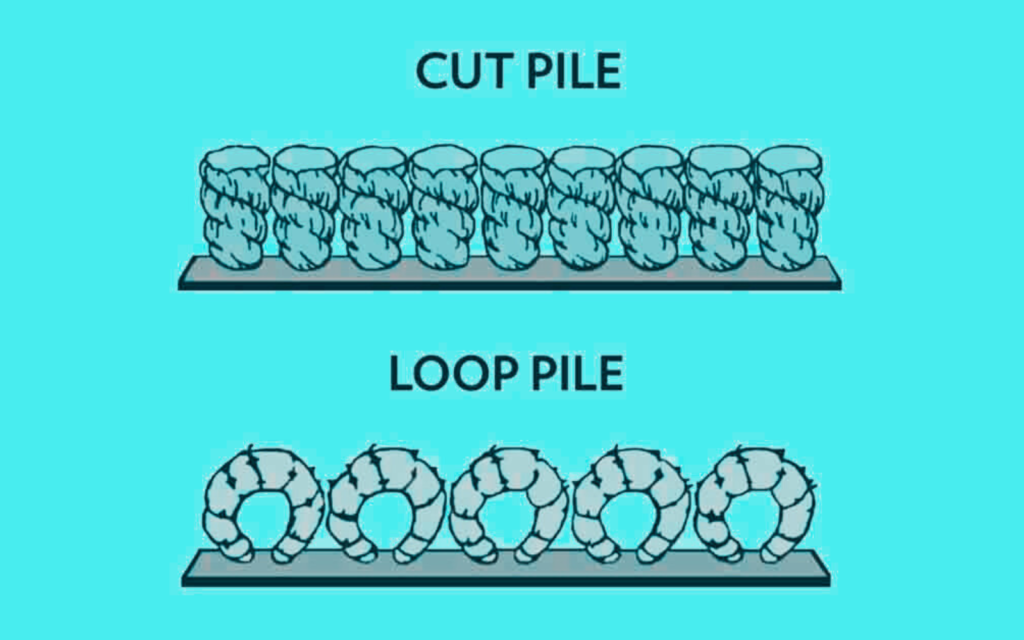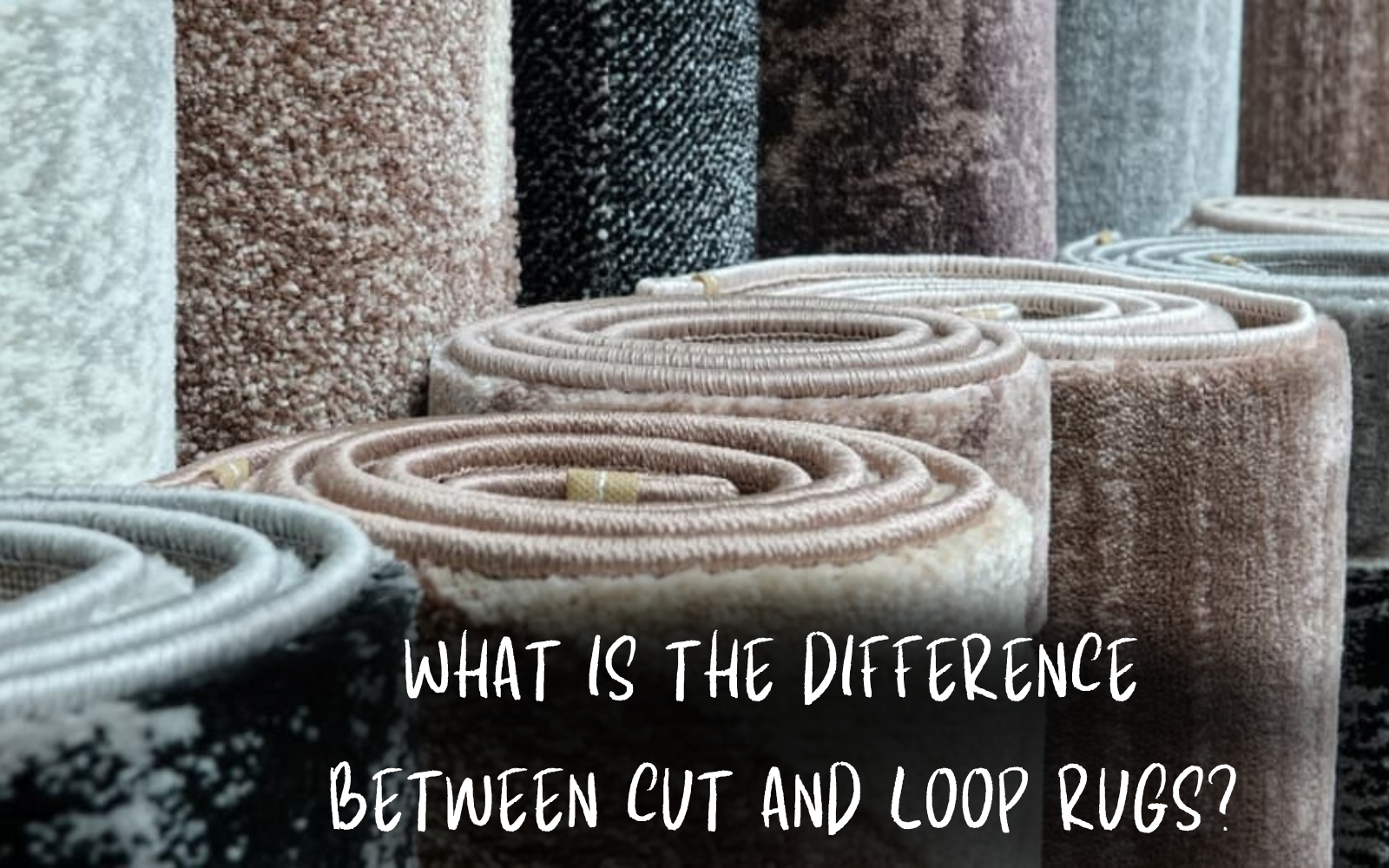Carpet is one of the decor and pieces of furniture involved in a home that many tend to ignore or pay less attention to.
Though it’s below our feet, it provides enough cushion for us to move around the house and step into the house, without feeling unstable because of the shiny and polished surfaces of the floor.
Carpet pile means the length and thickness of the carpet fibers, that help in weaving a proper carpet thick enough to withstand the weight and also keep them fixed to the floor.
The fibers of the carpet are woven in small loops, for backing and they can be both cut or looped. The pile of the carpet shows its thickness and density to withhold to the floor, not making for a slippery carpet.
Read the article further to know the difference between cut pile and loop pile, their advantages, pros, and cons of each pile carpet to gain an understanding of the same so that you can incorporate such knowledge while choosing the carpet.
What is a Cut Pile Carpet?
Cut pile carpet can be found in the shreds that are shredded or cut off while making the carpet. The fibers of the cut pile carpet get shared and they form an upright pile. With a uniform height and a smooth texture, they are mostly made of wool, polyester, and nylon.
The shag-cute pile carpets are said to have long fibers, where they are spaced and you can see the pattern. These carpets are quite durable and low-maintenance and need less to little maintenance.
One such popular cut-pule style is Saxony, and other such cut-pile carpet styles include velvet, frieze, and plush carpets which provide a smooth and soft surface.
Also Read- Elevate Your Décor: How To Build The Perfect Modern Accent Wall For Your TV
Pros:
- Soft: Cut-pile carpets are soft for the skin and comfortable underfoot. These cut piles have uniform textures, making them good use for residential purposes.
- Easy maintenance: They are easy to clean and vacuum, making it quite easy to clean off the dirt on the carpet.
- Conceals seams: They have high density in the carpet and it makes for good closure to seams. Loose piles are closed well and blend well, giving it a uniform and clean look.
Cons:
- Less durable: Though cut piles and loop piles are made from the same carpet fibers, they have differences in durability.

What is a Loop Pile Carpet?
Loop pile carpets are not sheared or shredded, but they contain loops of piles from the surface to the backing of the carpet. Various lengths of loops are used to make different textures, patterns, and designs by the manufacturers.
The loop piles also have a twist, and twisting them makes them durable for areas where they are used heavily. One such popular loop style is Barber, where a low pile with different flecks of colors is used. You can find them in natural fibers like wool, sisal, nylon, and olefin.
Pros:
- Lower cost: Loop pile carpets need less maintenance and once spent on this carpet, it can be assured that it will last long, as the cost ranges from $0.5-$7.5 per square foot.
- Doesn’t show footprints or vacuum marks: Loop pile carpets are types that don’t get compressed when stepped on. They bounce back to normal surface and size even after multiple uses, and stompings, unlike plush carpets.
- High resilience: They can withstand heavy foot traffic areas, and are popular for usage in houses and offices. Tight and twisted loops last longer than other styles of carpeting.
- Hides Stains and dirt: The loop piles help hide dirt from fibers, and they are quite easy to get rid of stains on tough spots.
Cons:
- Rough texture: Loop piles are often known for their dexterity endurance, and longevity, but they lack soft texture. They are low piles with tight loops, making them provide a coarse and textured surface. They can make it for a rough surface for underfoot, making it less preferable.
Also Read- Joint Compound Vs. Spackle: What’s The Difference?
What are the advantages of cut and loop carpets?
Cut-loop pile carpets are a blend of both cut and looped fiber carpets. The manufacturers or makers of the carpet, combine and mix different colors patterns, and designs to make cut and loop carpets.
They often feature geometric, striped and the infamous cross-hatch patterns to make it look appealing and adhesive enough for the slippery floor.
The specific advantages of cut pile carpets are that they can be used with velvet and nylon and also wool, making it a soft surface to walk on and used specifically for household or residential purposes.
They have quite a valid thickness and depth making them easy and apt for slippery floors and for easy walking or moving around.
The specific advantages of loop pile carpets are that they are quite durable and long-lasting, making it more preferable the cut pile carpets.
They are quite easy to use and can be easily cleaned when stained or full of dirt, as they are low-maintenance carpets. Though the texture is harsh, and not as soft as compared to the cut pile ones, they offer a good girl on the floor surface, making it useful for high-traffic areas.
Also Read- How Much Does A Bath Fitter Cost?
What is the difference between cut and loop rugs?
The major difference between the cut and loop rugs is their durability and texture. While cut pile loops are soft for footwork, loop pile rugs are quite hard in their texture, making them less preferable to the former.
The textures are made of coarse materials and they are formed in a loopy manner and twisty knots, making the loop pile rugs more textured and thick.
Loop piles are a better choice for high-traffic areas where footwork is more like that of offices or areas where labor is required, while cut pile loops have a soft yet and adhesive grip to them, due to their thickness and depth in the cut piles layered.

